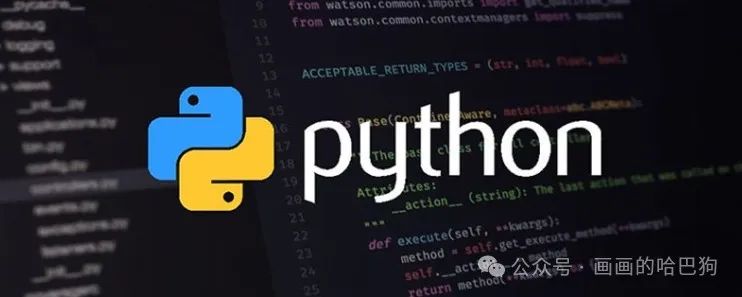Getting Started with Python Embedded System Development
Yuan Xiaodi Takes You into the Wonderful World of Python Embedded Development
Hello, friends! I am Yuan Xiaodi, and today we will explore the application of Python in embedded system development together. Imagine using Python, a simple and elegant language, to control hardware. Isn’t it both magical and interesting? Don’t worry, follow me step by step, and I guarantee you’ll find it easy to get started!
1. Introduction to Python Embedded Development
Python, this powerful programming language, is loved by developers for its simplicity and functionality. Embedded systems are computer systems designed to perform specific functions, usually small in size and low in power consumption, widely used in smart homes, medical devices, automotive electronics, and more. So, what happens when Python meets embedded systems?
In simple terms, Python embedded development refers to using the Python language to write programs that run on embedded devices. This is made possible by some Python interpreters designed specifically for embedded systems, such as MicroPython, which allows Python code to run on resource-constrained devices.
2. Introduction to MicroPython and Installation
MicroPython is a lean version of the Python language, designed for microcontrollers. It retains the core features of Python, such as variables, data types, conditional statements, loops, etc., while optimizing memory usage, allowing it to run on resource-limited embedded devices.
1# Example: MicroPython's Hello World
2print("Hello, MicroPython!")
Tip: To run MicroPython code, you need a hardware platform that supports MicroPython, such as ESP8266 or ESP32, and connect it to your computer via serial for programming.
3. Basic Operations: Variables and Data Types
In MicroPython, variables and data types are fundamental. A variable is like a small box used to store data, and the data type determines what kind of data this box can hold.
1# Example: Variables and Data Types
2a = 10 # Integer type
3b = 3.14 # Float type
4c = "Hello" # String type
5
6print(a, type(a)) # Output: 10 <class 'int'>
7print(b, type(b)) # Output: 3.14 <class 'float'>
8print(c, type(c)) # Output: Hello <class 'str'>
Note: In embedded development, memory resources are limited, so pay attention to the size of data types to avoid wasting memory.
4. Control Structures: Conditional Statements and Loops
Conditional statements and loops are two major control structures in programming. They allow the program to execute different code blocks based on conditions or repeat a segment of code.
1# Example: Conditional Statement
2x = 10
3if x > 5:
4 print("x is greater than 5")
5else:
6 print("x is less than or equal to 5")
7
8# Example: Loop
9for i in range(5):
10 print("i =", i)
Tip: In embedded systems, loops can consume a lot of CPU resources, so be sure to optimize loop structures and avoid unnecessary repeated calculations.
5. Functions: Code Reusability and Modularity
Functions are a basic concept in programming, allowing us to encapsulate a piece of code and give it a name for reuse elsewhere.
1# Example: Defining and Using a Function
2def add(a, b):
3 return a + b
4
5result = add(5, 3)
6print("Result:", result)
Note: In embedded development, due to limited memory, keep function definitions concise and clear to avoid overly complex internal logic.
6. Practical Example: Controlling an LED Blink
Next, let’s do a practical example by controlling an LED to blink using MicroPython. Assume you are using an ESP32 development board, and the LED is connected to GPIO pin 2.
1import machine
2import time
3
4# Initialize LED pin
5led = machine.Pin(2, machine.Pin.OUT)
6
7while True:
8 led.value(1) # Turn on LED
9 time.sleep(1) # Wait 1 second
10 led.value(0) # Turn off LED
11 time.sleep(1) # Wait 1 second
Tip: In actual development, be sure to carefully read the pin definitions of the development board when connecting hardware to ensure correct connections.
7. Advanced: Exception Handling and File Operations
In embedded development, exception handling and file operations are also very important knowledge points. Exception handling allows programs to be more robust when encountering errors, while file operations allow us to read and write data on storage devices.
1# Example: Exception Handling
2try:
3 result = 10 / 0 # This will raise a ZeroDivisionError
4except ZeroDivisionError:
5 print("Error: Division by zero is not allowed")
6
7# Example: File Operation (Writing)
8with open("data.txt", "w") as file:
9 file.write("Hello, MicroPython!\n")
10
11# Example: File Operation (Reading)
12with open("data.txt", "r") as file:
13 content = file.read()
14 print(content)
Note: In embedded systems, file operations can be time-consuming, so consider this when designing programs to avoid performing file operations on critical paths.

8. Summary and Outlook
Friends, today’s introduction to Python embedded system development ends here! We learned the basic concepts of MicroPython, variables and data types, control structures, function definitions, practical LED blinking, as well as exception handling and file operations. These knowledge points are just the tip of the iceberg; there is much more excitement waiting for us to explore in the world of embedded system development.
Remember to get hands-on coding; practice is the only standard to test truth! If you have any questions or want to share your learning experiences, feel free to leave a comment for Yuan Xiaodi. Wishing everyone a pleasant learning experience and continuous progress in Python learning!